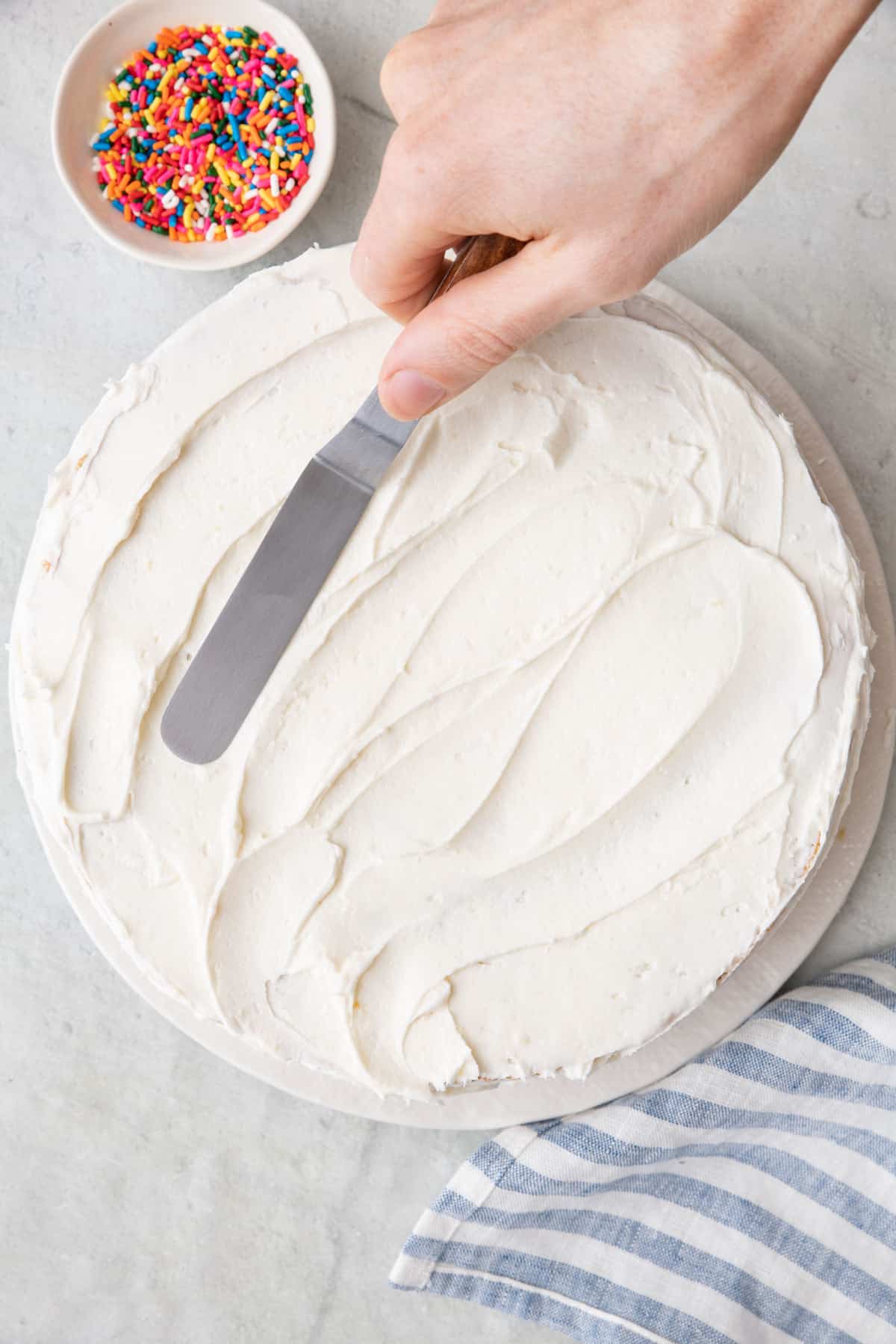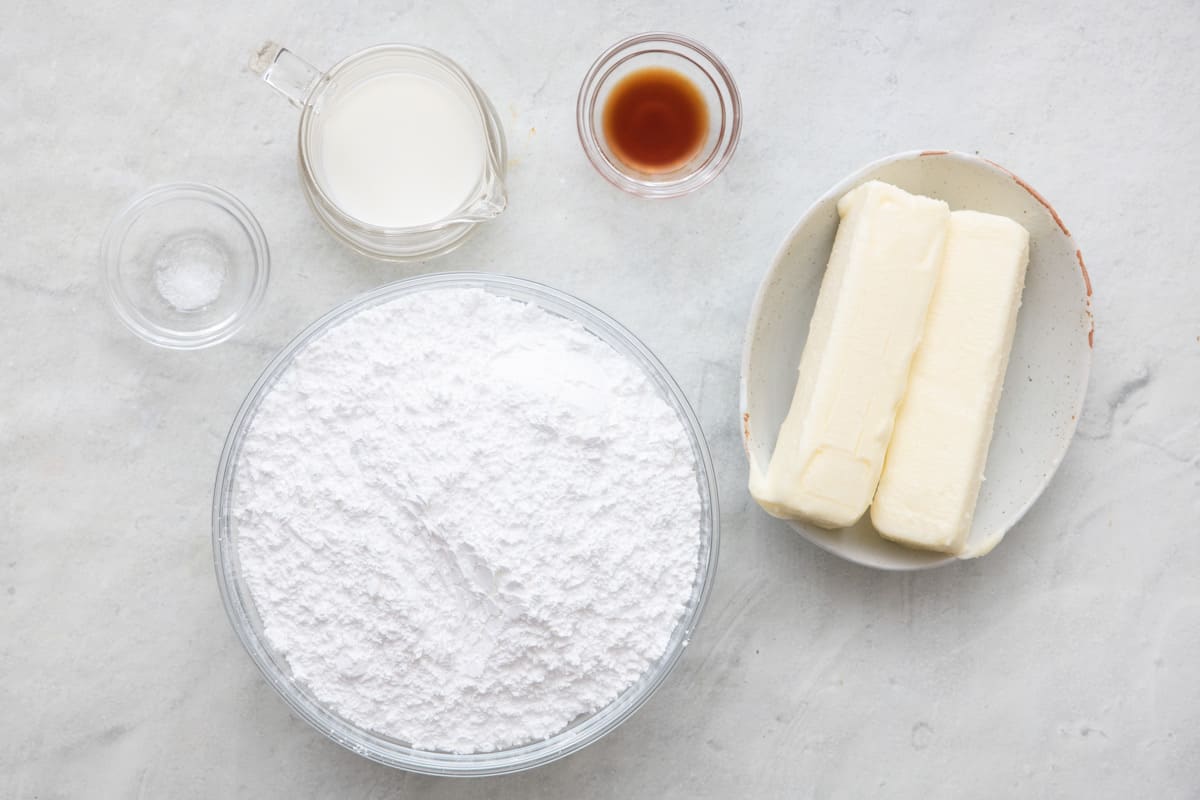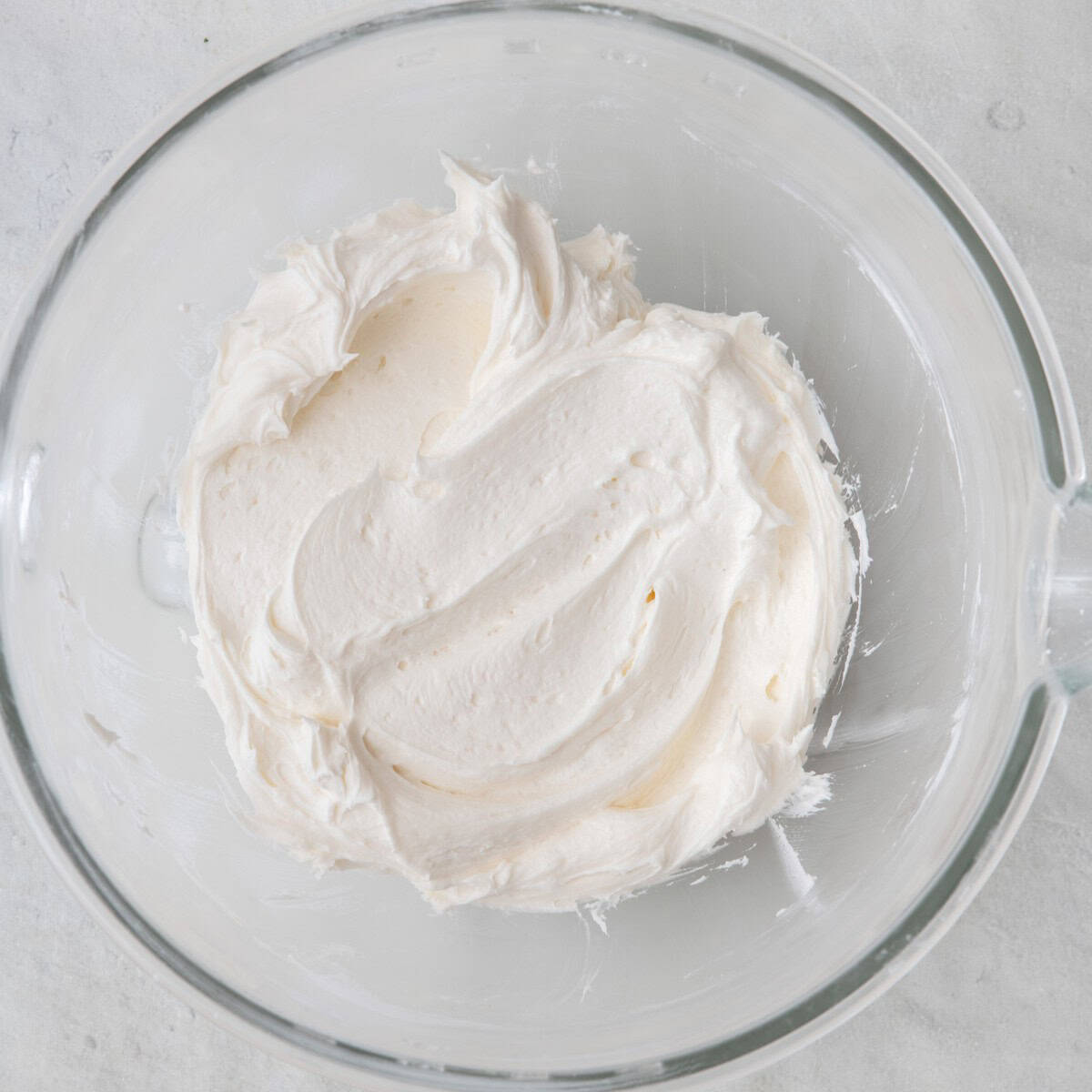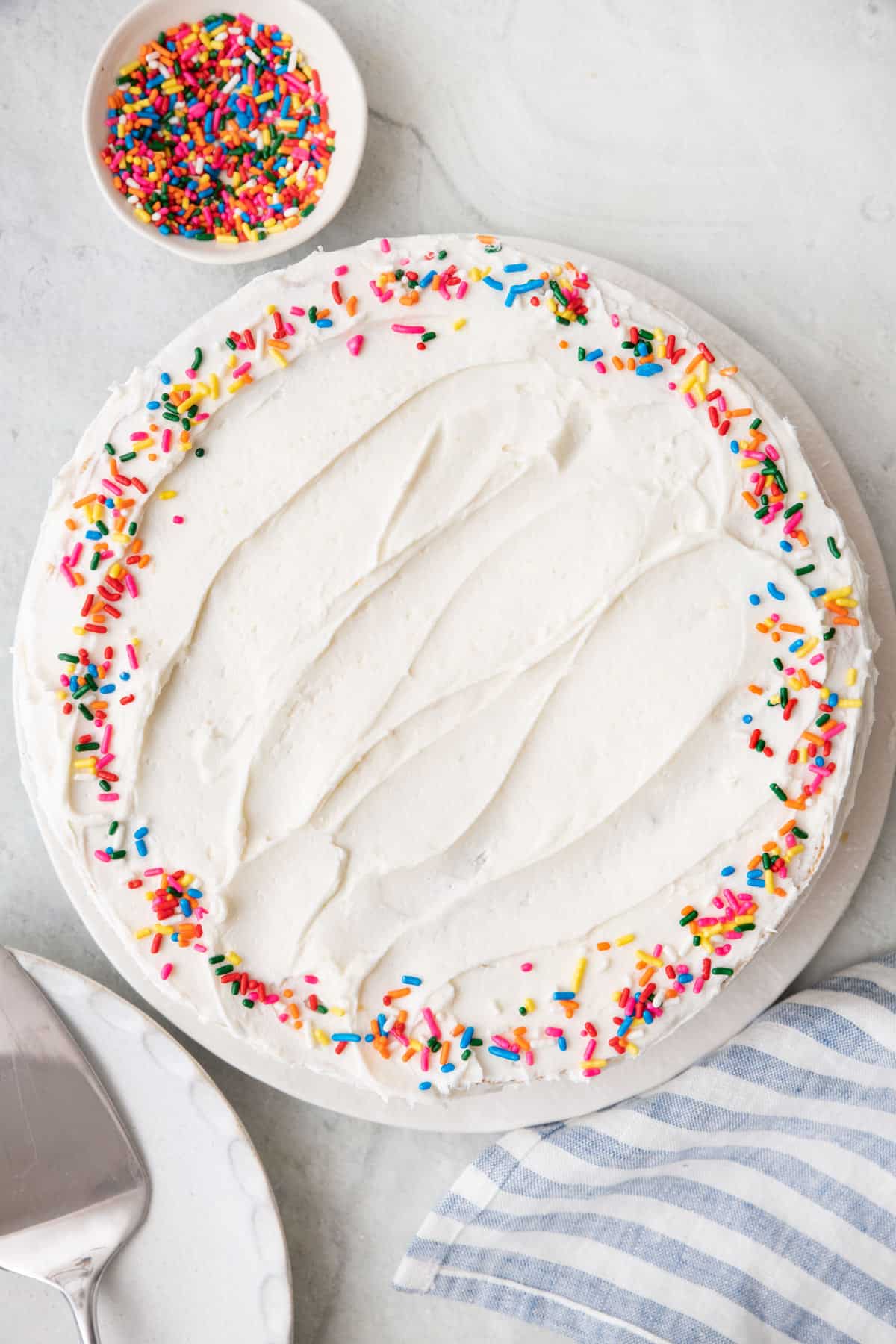How to Make Buttercream Frosting
Updated Apr 30, 2025
This homemade buttercream recipe can be used for standard icing on a cake or in a piping bag on a cupcake. It takes 5 ingredients and is ready in 15!
This post may contain affiliate links. Please read our disclosure policy.

Jump to Section
My Homemade Buttercream Frosting is So Good!

I don’t buy buttercream frosting anymore; this one’s just easier and tastes 10,000 times better to me. It takes five ingredients and a few minutes to make, and it always turns out how I need it to. I use it for cakes, cupcakes, cookies, whatever’s happening that week. It’s the kind of buttercream that’s soft and easy to spread but still sturdy enough to pipe.
Happy Cooking!
– Yumna
Buttercream Frosting Ingredients

- Unsalted butter: Using unsalted allows you to control the salt content since salted butter can vary widely by brand. Make sure it’s room temperature so mixes easily.
- Confectioner’s sugar: Also referred to as powdered sugar, this should be sifted before adding it to the butter for a smooth frosting. If you are out, you can put an equal amount of granulated sugar in a high speed blender and process it for about a minute to make powdered sugar.
- Milk: This recipe uses whole milk but you could also use heavy cream or a non-dairy alternative such as coconut milk or nut milk.
- Vanilla extract: Choose pure vanilla extract instead of imitation flavoring as it can add a bitter aftertaste. You could use other extracts such as lemon or almond.
- Salt: a pinch of salt is just enough to balance the sweetness and enhances the flavor.
How to Make Buttercream Frosting





How to Make Buttercream Recipe
Ingredients
- 2 sticks unsalted butter at room temperature
- 4 cups Powdered sugar sifted
- 3 tablespoons whole milk
- 1 teaspoon vanilla extract
- pinch salt
Instructions
- Add butter to the bowl of a stand mixer fitted with the paddle attachment. Mix at medium speed for 2 to 3 minutes, or until it starts to lighten up in color and turn fluffy.
- Stop the machine and scrape down the sides of the bowl with a rubber spatula. Add 1 cup confectioner’s sugar at a time until it has all been incorporated. Add milk, vanilla and salt and continue to mix until the mixture is very light and fluffy, about 1 to 2 minutes.
- Use immediately, or store in the fridge, tightly wrapped for up to 3 days. Let come to room temperature and re-whip before using.
Notes
Nutrition
Nutrition information provided is an estimate. It will vary based on cooking method and specific ingredients used.
If you found this tutorial for How to Make Frosting helpful or if you try any recipe on Feel Good Foodie, then don’t forget to rate the recipe and leave a comment below!
Recipe Tips
- Sift the sugar. Sometimes sifting feels like a lot of work, but in this case, I strongly suggest that you don’t skip it. This is what will keep your frosting light, fluffy, and smooth.
- Use room temperature butter. This is very important when making frosting because room temperature butter can hold air and makes the final frosting more light and airy, whereas warm or melted butter will create a denser result. Learn how to soften butter four different ways.
- Scrape down the sides as you go. When creaming the butter, add the sugar, and towards the end, continue to scrape down the sides when needed to ensure that everything is well incorporated. This will give you a smooth and fluffy frosting.
- Create a smoother finish. Turn the mixer to low speed at the end for about 30 seconds to help remove any large air pockets for a smoother finish.

Recipes to Make with Homemade Frosting
There are a few different ways to use buttercream frosting, cake and cupcakes are a must! But you can also try it on a few other sweets.
- Classic Vanilla White Cake
- Mug Cakes
- Cupcakes
- Sugar Cookies or Ginger Snap Cookies
- Carrot Cake Muffins
Frequently Asked Questions
Store buttercream covered in the fridge. To reuse, bring to room temperature and rewhip for the best consistency. Frosting can be stored in the fridge for 3 days but is best used fresh.
You can store the frosting in an airtight container or freezer bag for up to 3 months. Thaw in the refrigerator the day before and bring to room temp before re-whipping and using.
This buttercream makes enough to cover a 9 x 13 sheet cake, a two 9-inch round layer cake, or 24 cupcakes.
The words frosting and icing are primarily interchangeable in terms of naming the recipe, and it is common to hear “frosting” be called “icing.” But in short, frosting is typically fluffy, thick, and spreadable compared to icing, which is thin and pourable. Icing combines powdered sugar and a liquid such as milk or cream.
You can make frosting 2-3 days ahead of time and store it in the fridge, or freeze up to 3 months.







Comments
The recipe doesn’t say how much of each ingredient to use
Hi Linda, right above the comments you’ll find a recipe card complete with the full instructions as well as ingredient measurements. Hope that helps!
Would this work with salted butter if I omitted the pinch of salt?
If it’s all you have, then frosting can be made with salted butter but results with vary. Each brand has different levels of salt in them, which is why unsalted is preferred.